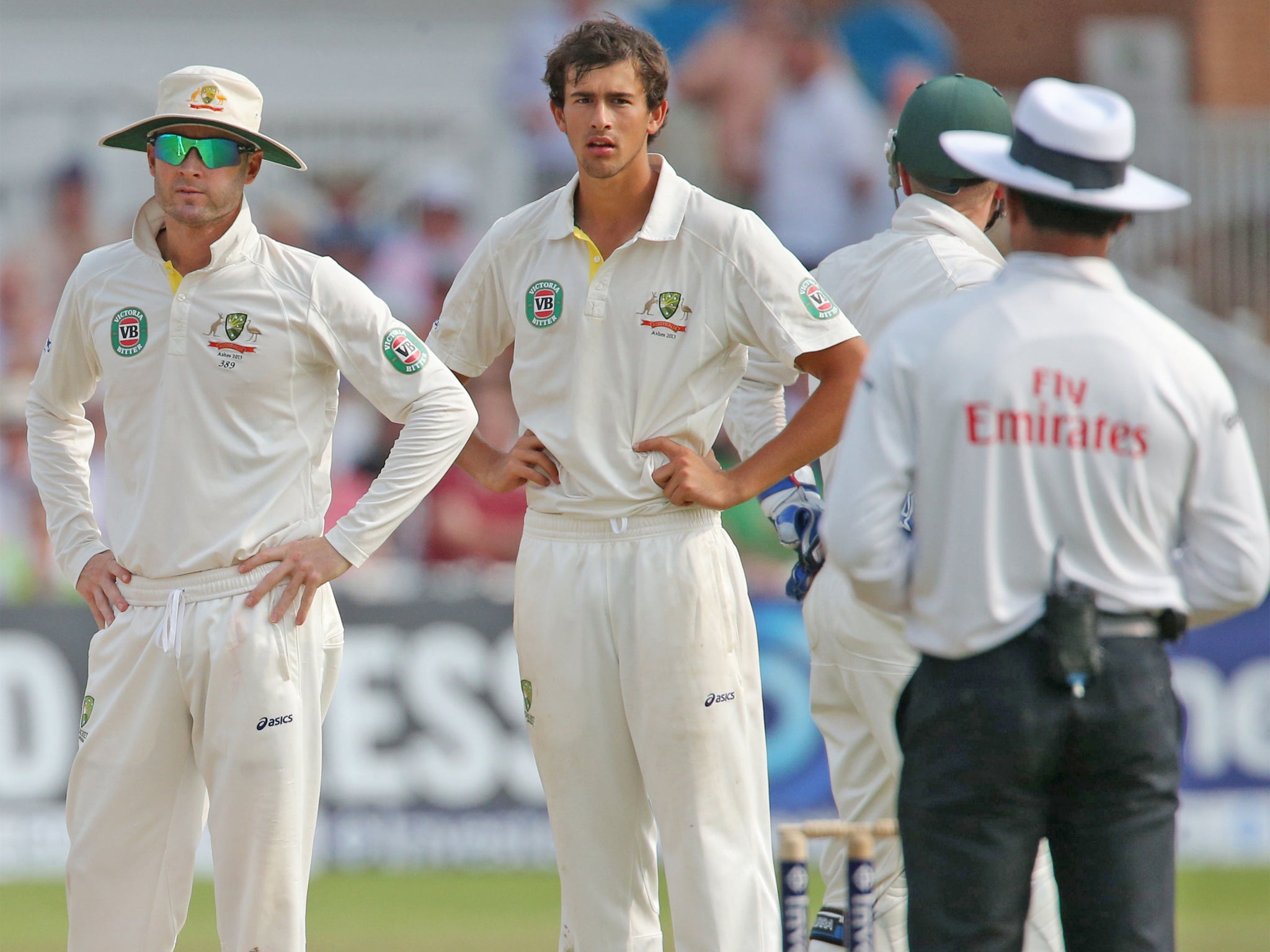The Independent's journalism is supported by our readers. When you purchase through links on our site, we may earn commission.
Angus Fraser on the Ashes: Wouldn’t cricket be better off without DRS until the wrinkles are ironed out?
The game has created an animal that we don’t know how to control

On occasions during England’s thrilling victory in the first Ashes Test it was easy to forget that Ian Bell had scored a magnificent hundred and James Anderson had bowled beautifully. The airwaves, internet and newspapers seemed obsessed by the umpires’ Decision Review System and technology. Sadly, the performance of this system rather than the players – the real stars – dominated headlines.
For someone who has never been smitten with technology this focus marred my enjoyment of what was a stunning game of cricket. I wanted to read and hear about how well Bell had batted in a hot, intense, vital period of the Test, not that Stuart Broad had got away with edging one to slip because Australia had used up their reviews. Nor was I that fascinated by what the inventor of Hot Spot had to say for himself.
The coverage made me believe that technology is not actually serving cricket as well as it can and has too much of a hold on the game. When technology was introduced it was meant to remove real controversy from the sport by eliminating the occasional howler made by an umpire. DRS was meant to give everyone a clear understanding of what had taken place so that the correct decision could be given. On most occasions it achieves this goal. But when it fails, as the Broad and Jonathan Trott incidents highlighted, marginal decisions can easily be transformed into national catastrophes and this to me cannot be right.
At the moment cricket is half pregnant when it comes to technology. The game has created an animal that it does not know how to control. The call for technology comes from an enormous improvement in television coverage and the ability of cameras to spot detail not previously seen. And because of this everybody knows the most effective way of reducing umpire error to a minimum is to refer every appeal or moment of uncertainty to a third umpire sat in an air-conditioned booth. On one of a dozen screens he will then, frame by frame, study the event from every angle and using every piece of technology – Hot Spot, super slowmo and audio – available. So forensic is the coverage that it won’t be long before a batsman is diagnosed with a stress fracture in his back after referring a dodgy decision.
Cricket, understandably, is reluctant for there to be no limit on referrals because there will be periods of play where several appeals per over are sent for judgement, which will result in the game coming to a standstill. It is the reason why each captain is only allowed to incorrectly send two referrals per innings up to the third umpire.
Many believe that in the case of Broad the fault lay at Australia’s feet because Michael Clarke had incorrectly asked for two previous decisions to be looked at. I wonder whether England followers would have been so flippant had Alastair Cook used up his referrals before Brad Haddin was given out. Is it right that judging which decision to refer is now part of a captain’s skill set?
If technology is God, which many believe it is, it does not make sense that the Umpires Call rule applies. It is there to support the decision the on-field umpire makes. With many of these decisions we are talking about millimetres on a judgement where a margin for error is catered in. It is not an exact science.
The compromise makes the whole system look foolish because batsmen are given not out when the ball is hitting more of the stumps than when they are given out. And being the bitter and twisted bowler I am, yet being fully aware of the margin of error that exists in Hawk-Eye, I still struggle to see how a batsman is given not out when technology shows the ball will go on to hit the stumps.
The skill for fielding teams now is convincing an uncertain umpire to raise his finger if in doubt. With Australia having used up their referrals prior to the final day of the Test the stumps had in essence become four inches wider. Again, is it right that the odd millimetre here and there should make such a difference?
In time I am sure these issues will be sorted out but in the meantime wouldn’t the game be better served by forgetting technology and returning to where we were? Technology was not used on England’s 2012 tour of India but do we remember the series for the occasional mistake made by an umpire? No, we remember it for the wonderful batting of Cook and Kevin Pietersen, the high quality bowling of Graeme Swann, Monty Panesar and Anderson, and because England produced a remarkable comeback to win the series 2-1.
Subscribe to Independent Premium to bookmark this article
Want to bookmark your favourite articles and stories to read or reference later? Start your Independent Premium subscription today.

Join our commenting forum
Join thought-provoking conversations, follow other Independent readers and see their replies